Welbourn Hill Station
In 1909 Welbourn Hill station was taken up by the father of Jack and Phil who later ran it, Mr W. Giles.
In 1909 Welbourn Hill station was taken up by the father of Jack and Phil who later ran it, Mr W. Giles.
Gove had his own company, Julius Gove and Co., and specialised in shipping to Bombay. He created such a sound company, it traded on long after his death in 1922.
Sir Sidney Kidman, born in 1857, is the subject of books, as he should be, having worked his way up from nothing to being the biggest landowner in the world.
Ernabella in the Musgrave Ranges, was named by John Carruthers who did extensive surveying and exploring there in the 1880’s. He was based there for four years doing trigonometric surveys for government.
The Grand Hotel in Calcutta (now the Oberoi) had a “Waler Corner” where Australian horse traders met; often after the horses were sold at the Army Remount Depot at Alipore. Some traders such as Jim Robb stayed here.
Bloodlines would go back to some of the earliest horses brought to Australia, they are wise, good natured, strong, safe horses.
There was a set of yards shaded by a few pretty trees (only the boabs get big there, don’t like to boast but we do have proper trees in Tassie but one wouldn’t say that up there) and in the yards were a lot of wild horses – they’d been mustered by chopper a day or two before.
Next morning we walked to the Fitzroy River. Normally the bridge is high above it, but now a raging yellow torrent gushed over it. Trucks and cars stranded either side.
Waler Database @ FaceBook. Image: Young Brigadier in yards, Ros Sexton photo.
Brigadier was caught on Mt. Riddock, N.T. as a youngster in the late 1980’s. At some stage during yarding or trucking he got a bad injury to his jaw, dislocating it.
Mt Riddock was totally shot out soon after, so the few of their horses we got were very precious. Brig was the light type of Waler we called the Officer’s Charger type; nonetheless good bone is essential.
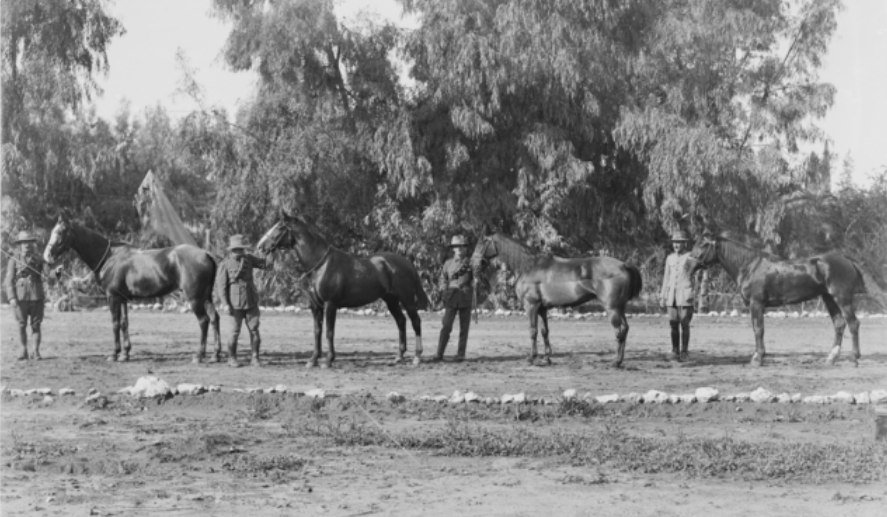
Image: A group of four officers’ chargers attached to the Anzac Mounted Division. Rishon, Palestine, 1918. AWM
A wild colt, he went by crowded cattle truck from the Alice Springs saleyards, then by float to Ros Sexton – a gentle, tiny, courageous person who was one of the most positive people I’ve had the honour to meet. And such a kind smile, always. At that stage Ros lived in Darwin, where her husband was stationed with the Air Force; the family soon after moved near Canberra, buying a little farm for Brig.
Ros had horse experience with only the most trained, tractable horses. She wasn’t daunted by Brig’s injuries, yes he had a few lacerations too, the fact he was entire, nor his wildness and spirited outlook on life. She set to work kindly and patiently. Determination was Ros’s second name!
Brig was a lively young chap, not many could have got through to him or would have bothered trying, but in no time he and Ros were becoming best buddies. He’d become thin en route to her place due to his jaw injury and it was only his brave spirit that kept him going. She fed him special soft food as his jaw injury meant he couldn’t graze. He needed to be transported for a x-ray but was still a bit wild. Vets visited, and shook their heads. One day as she was lying in Brig’s green paddock holding his food bucket and day dreaming, Brig walked over to a loading ramp fence, stuck his head in it, and twisted. CRACK! She said he looked so proud! He’d put his own jaw back into order. From then on there was no stopping them!
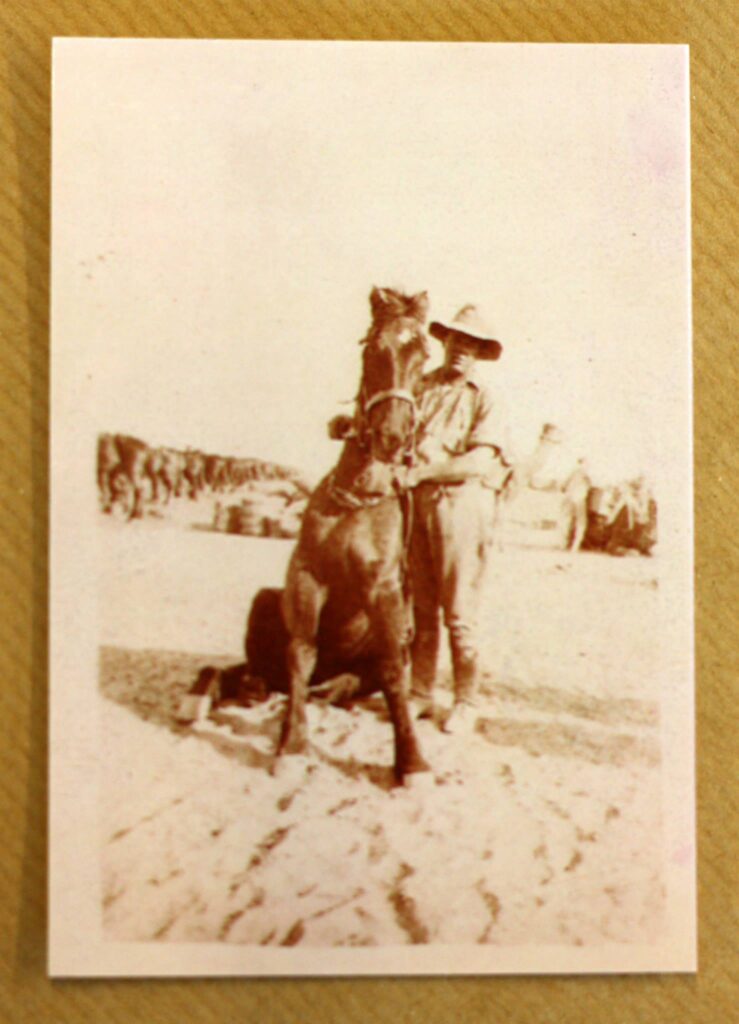
You can hear Ros talk about her experience with Brigadier in this Podcast, so much history and such life in the story telling!
And Ros supplied some photos to the ABC after that programme too, such a treasure trove for our website. Including this precious photo of Horace Flitcroft of the 10th Light Horse and his Waler mare Rosie in Palestine, hear more about them in the Podcast.
Ros wanted her young Waler to shine while remaining a stallion for breeding on, so decided endurance would get him out and about. She was too old and inexperienced herself but that didn’t stop Ros! She found a good willing rider keen to help. Often Ros strapped, and Brig showed the world Walers were good at endurance. He also went to Anzac Days and the odd show. He had a lot of friends and fans, he had that look-at-me presence in real life, far more so than in photos. A stunner.
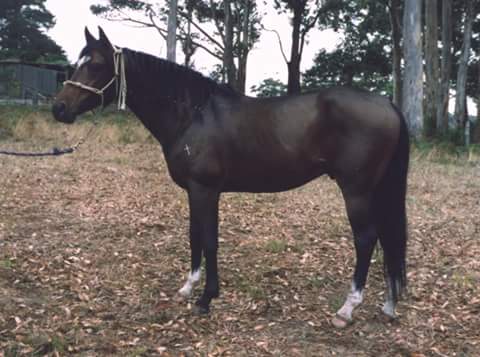
Ros built high stallion yards and had her paddocks stallion fenced, had beautiful stables built and all needed for a good young stallion. Her stud name was Tinderry. She got some mares and hosted visiting mares, and did the hand serving herself.
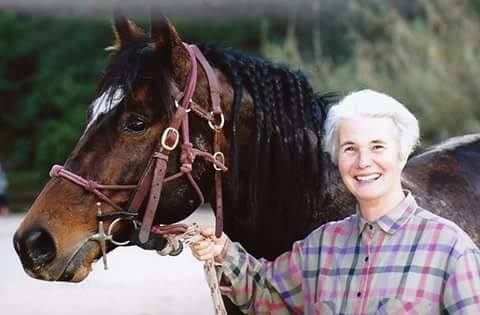
Image: Ros Sexton and Brigadier, family photograph.
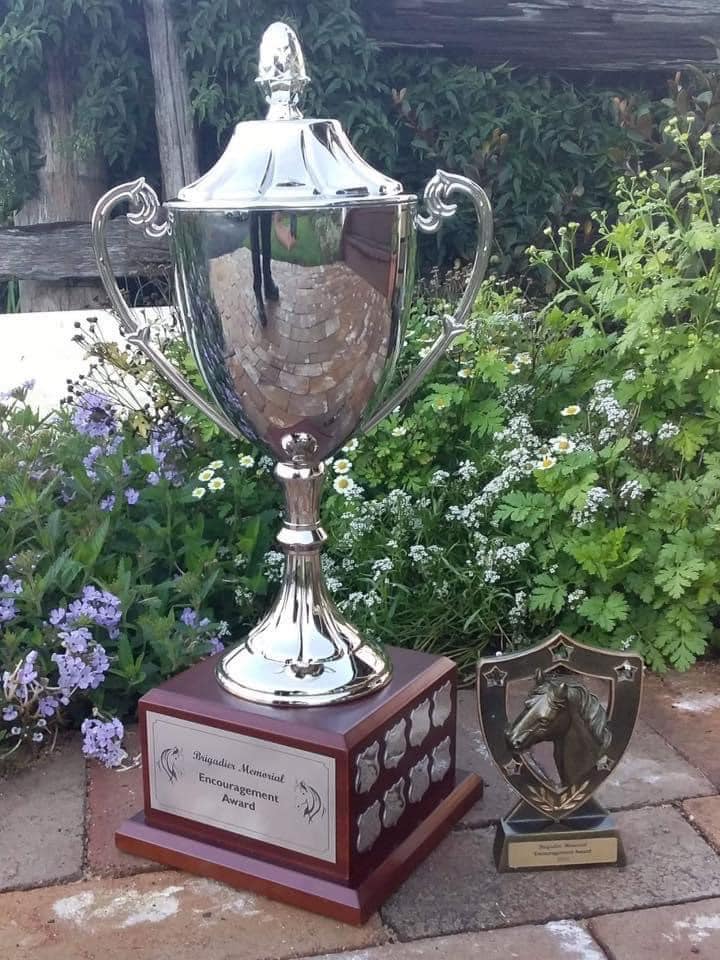
One of Brig’s foals from Britannia, a beautiful black Waler mare owned by the wonderful Lyndy Nixon who also had a lovely farm near Canberra, went on to become successful at endurance too.
Ros sponsored the The Brigadier Memorial Encouragement Award with the breed society (NSW State Championship show), which some top Walers and people have won, well done. It is awarded to the horse and rider combination on the day who “tries” their hardest.
The stories of Brig and Ros are too many to relate. Anyone with any please send in to us, and any photos, and any details of his progeny or anything Brig related.
Brig died in 2010 at 24 years after a good life, and Ros, a dear good friend, who’d been ill some time but never once complained, sold the stud she was no longer able to manage and moved nearer family. Ros died in 2020. Never, ever, ever forgotten. Our database has stories about several Walers, Ros, who was very supportive, tragically passed on before getting all hers done – just before we updated the website to make this possible, thanks to Angela and Sue. Please send in any photos and stories of your Waler to keep them recorded.
At the time of saving Walers in the 1980’s and 1990’s, most if not all came from Central Australia. We needed to seek new genes to prevent a genetic bottleneck.